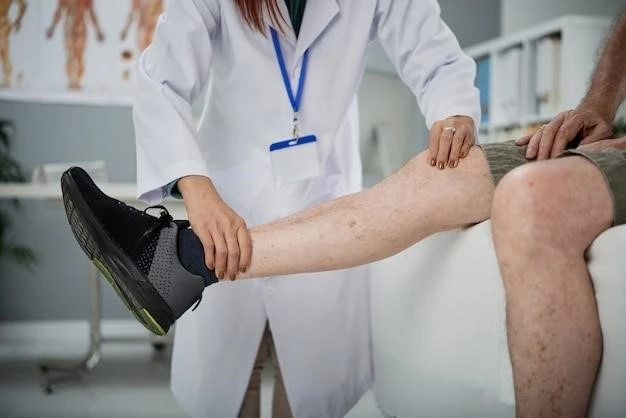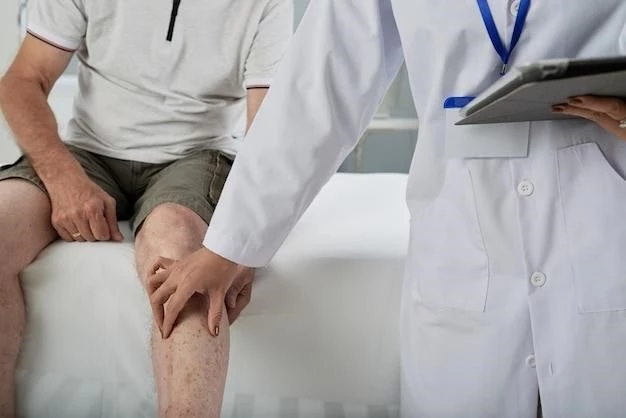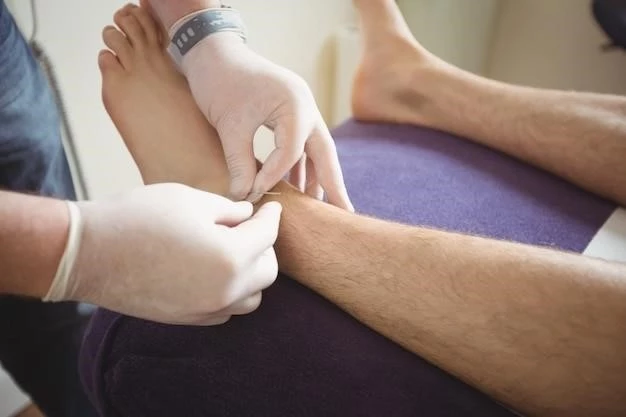Introduction to Toxopachyoteose Diaphysaire Tibio Peroniere
The syndrome known as Toxopachyoteose Diaphysaire Tibio Peroniere is characterized by anterior bowing of the tibia and fibula with specific cortical thickening and trabecular irregularity. This condition was first described in 1954 by Weismann-Netter and Stuhl.
Description and Characteristics of the Syndrome
The syndrome known as Toxopachyoteose Diaphysaire Tibio Peroniere is characterized by anterior bowing of the tibia and fibula with posterior cortical thickening and trabecular irregularity in the region of bowing. This rare condition was first described by Weismann-Netter and Stuhl in 1954 and typically presents with specific features such as diaphyseal bowing of other long bones, squaring of the pelvis, scoliosis, and short stature. The syndrome is considered a generalized diaphyseal dysplasia with distinctive anterior bowing features in the tibia and fibula.
Background and History
The syndrome known as Toxopachyoteose Diaphysaire Tibio Peroniere was first described by Weismann-Netter and Stuhl in 1954. It is characterized by anterior bowing of the tibia and fibula with specific cortical thickening and trabecular irregularity, presenting a unique pattern of bone deformity.
In 1954, Weismann-Netter and Stuhl first described Toxopachyoteose Diaphysaire Tibio Peroniere as a rare syndrome characterized by anterior bowing of the tibia and fibula with specific posterior cortical thickening and trabecular irregularity. This condition presents a distinct pattern of bone deformity and has since been associated with diaphyseal bowing of other long bones and squaring of the pelvis. The classic feature is congenital anterior bowing of the middiaphyseal part of both tibiae and fibulae, indicating a generalized diaphyseal dysplasia.
Discovery and Initial Description
In 1954, Toxopachyoteose Diaphysaire Tibio Peroniere was initially described by Weismann-Netter and Stuhl as a distinctive syndrome characterized by a rare pattern of bone deformity specifically involving the anterior bowing of the tibia and fibula with posterior cortical thickening and trabecular irregularity.
The characteristic feature of Toxopachyoteose Diaphysaire Tibio Peroniere is the anterior bowing of the tibia and fibula with posterior cortical thickening and trabecular irregularity in the region of bowing. This rare syndrome typically presents with bilateral and symmetrical bowing, along with other long bones’ diaphyseal bowing and squaring of the pelvis. Short stature and specific bone deformities mark the diagnosis of this condition, which was first reported in 1954 and recognized as a generalized diaphyseal dysplasia.
Diagnostic Methods
Diagnosing Toxopachyoteose Diaphysaire Tibio Peroniere involves imaging techniques, such as X-rays, to identify specific features like anterior bowing of the tibia and fibula, cortical thickening, and trabecular irregularity.
Imaging Techniques for Diagnosis
To diagnose Toxopachyoteose Diaphysaire Tibio Peroniere, imaging techniques like X-rays are crucial. These images help identify the specific bone deformities such as the characteristic anterior bowing of the tibia and fibula along with the associated cortical thickening and trabecular irregularity. Radiographs play a key role in confirming the presence of bilateral and symmetrical bowing, aiding in the accurate diagnosis of this rare syndrome.
Anterior Bowing of the Tibia and Fibula
The hallmark of Toxopachyoteose Diaphysaire Tibio Peroniere is the anterior bowing of the tibia and fibula, showcasing a distinct bone deformity pattern with posterior cortical thickening and trabecular irregularity. This syndrome typically presents with bilateral and symmetrical bowing of the legs, emphasizing a specific set of bone abnormalities that define the condition.
Toxopachyoteose Diaphysaire Tibio Peroniere is linked to genetic factors, with a recognized association between diaphyseal bowing of long bones and pelvic abnormalities. The condition presents as a generalized diaphyseal dysplasia characterized by specific anterior bowing of the tibia and fibula with cortical thickening and trabecular irregularity, suggesting a genetic basis for the syndrome’s development.
Epidemiology and Prevalence
The syndrome known as Toxopachyoteose Diaphysaire Tibio Peroniere is a rare condition characterized by specific bone deformities, including the anterior bowing of the tibia and fibula with posterior cortical thickening and trabecular irregularity. This syndrome demonstrates a generalized diaphyseal dysplasia pattern and typically presents with bilateral and symmetrical bowing of the legs, affecting a limited number of reported cases.
Reported Cases and Incidence Rates
Toxopachyoteose Diaphysaire Tibio Peroniere is a rare syndrome first described by Weismann-Netter and Stuhl in 1954. Since then٫ only a limited number of reported cases have been documented٫ emphasizing the unique bone deformities associated with the condition. The characteristic anterior bowing of the tibia and fibula with specific cortical thickening and trabecular irregularity presents a distinctive pattern٫ with reported incidences showing a symmetrical and bilateral nature in affected individuals.
Management and Treatment
The management of Toxopachyoteose Diaphysaire Tibio Peroniere involves a multidisciplinary approach aimed at addressing the specific bone deformities associated with the syndrome. Treatment may include orthopedic interventions to correct the bowing of the legs and potential complications, along with ongoing monitoring to assess bone growth and development.
Association with Genetic Damage
Toxopachyoteose Diaphysaire Tibio Peroniere shows an association with genetic factors contributing to the specific bone deformities observed in affected individuals. The syndrome’s genetic basis is evident through the characteristic anterior bowing of the tibia and fibula with cortical thickening and trabecular irregularity, indicating a genetic predisposition to the syndrome’s development.

Prognosis and Complications
The prognosis for Toxopachyoteose Diaphysaire Tibio Peroniere depends on early diagnosis and appropriate management to address the specific bone deformities. Complications may arise from untreated deformities, highlighting the importance of timely intervention to mitigate long-term effects.
Potential Long-Term Effects and Complications
Long-term effects and complications of Toxopachyoteose Diaphysaire Tibio Peroniere may be related to untreated bone deformities, such as restricted mobility, skeletal abnormalities, and potential growth impairments. Timely management and ongoing monitoring are essential to address and minimize the risk of long-term complications associated with this rare syndrome.
Research and Studies
Research on Toxopachyoteose Diaphysaire Tibio Peroniere has focused on understanding the genetic basis and specific bone deformities associated with the syndrome. Studies have highlighted the rare pattern of anterior bowing of the tibia and fibula, emphasizing the need for further investigation into the underlying mechanisms and potential treatment options.
Recent Studies on Toxopachyoteose Diaphysaire Tibio Peroniere
Recent studies on Toxopachyoteose Diaphysaire Tibio Peroniere have focused on understanding the unique bone deformities and genetic factors associated with the syndrome. Researchers have highlighted the specific pattern of anterior bowing of the tibia and fibula, emphasizing the need for further investigations into the syndrome’s genetic basis and potential treatment approaches.
Future Directions in Treatment
Future research in the treatment of Toxopachyoteose Diaphysaire Tibio Peroniere aims to explore advanced orthopedic interventions and genetic therapies to address the specific bone deformities associated with the syndrome. Investigating innovative approaches to manage and potentially correct the anterior bowing of the tibia and fibula is crucial for enhancing patient outcomes and quality of life.
Advancements in Managing the Syndrome
Recent advancements in managing Toxopachyoteose Diaphysaire Tibio Peroniere focus on understanding the genetic and skeletal aspects of the syndrome. Researchers are exploring innovative orthopedic interventions and genetic therapies to address the anterior bowing of the tibia and fibula, aiming to improve patient outcomes and quality of life. Ongoing studies aim to enhance treatment approaches and optimize care for individuals affected by this rare condition.

Conclusion
In conclusion, Toxopachyoteose Diaphysaire Tibio Peroniere is a rare syndrome characterized by unique bone deformities, specifically involving the anterior bowing of the tibia and fibula with posterior cortical thickening and trabecular irregularity. Research efforts continue to focus on understanding the genetic aspects and bone abnormalities associated with the condition to improve treatment outcomes and quality of life for affected individuals.
Summary of Key Points about Toxopachyoteose Diaphysaire Tibio Peroniere
Toxopachyoteose Diaphysaire Tibio Peroniere is a rare syndrome characterized by anterior bowing of the tibia and fibula, cortical thickening, trabecular irregularity, and is associated with genetic factors. This condition presents a unique pattern of bone deformity with bilateral and symmetrical bowing affecting a limited number of reported cases.
